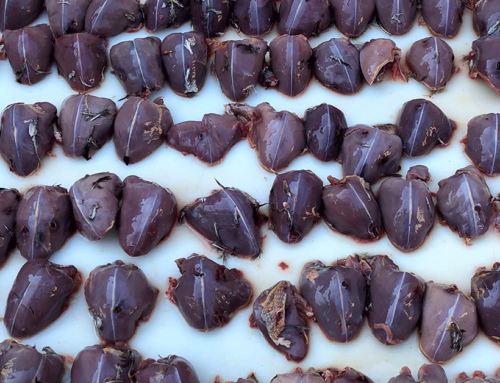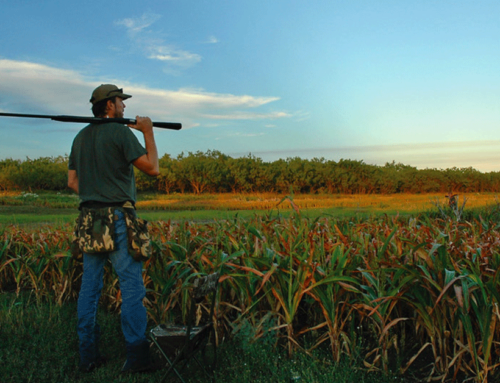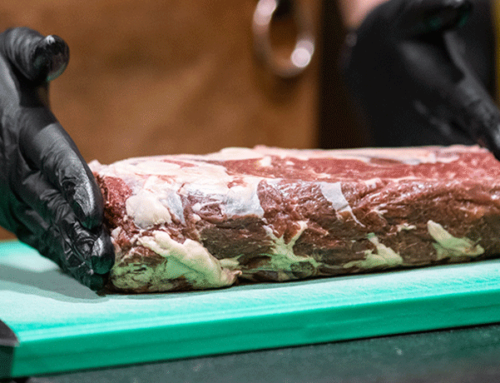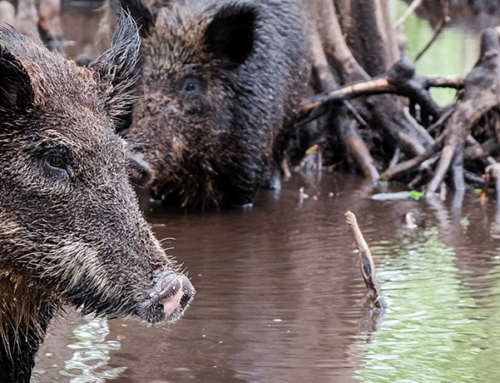Feral swine are a major problem in the southeastern United States. They were introduced by Spanish explorers in the 1500s and have been raising hell ever since. They are sexually mature at 6 months and can have two or three litters of piglets per year. Wild pigs do an incredible amount of destruction to your agriculture, your livestock, and your forests. We are talking millions and millions of dollars of damage in Georgia agriculture alone. I love to experience as many types of hunting as I can, so living on the TN/GA state line gave me the opportunity to experience hog hunting. A different style of hog hunting. Live hunting with dogs & knives. Something people have been doing since the birth of our country. Remember, dogs were working animals before they became America’s favorite pet.

You have to understand that this is a rough and raw style of hunting. People have been hunting hogs with dogs since the 1400s, so this isn’t exactly “new”. It’s a pure honest form of hunting. Just the raw instinct of one animal trained to go against the raw instinct of another. These dogs are trained and bred for this style of hunting. They are trained work animals, but that doesn’t mean that they don’t occasionally come out on the losing end. Each one of our guides had stories of super-angry hogs that decided to fight instead of run and ended up killing dogs before they could get there. This type of hunting is not for everyone, but I’m not everyone and I enjoyed it immensely. Here are my experiences and what I learned.
Bay Hunters
My hog hunts have been turn & burn weekend hunts. We Leave on Friday after work, bang out a 3-hour road trip to South Georgia and come back on Sunday. We arrive right before it’s time to head out for the nightly bay hunt. Our hunting friends at Dog Life Kennels are getting the equipment together and loading their hunting dogs into dog boxes. The boxes are mounted on the back of an old flat-bed pickup truck that just looks like it’s been through hell twice. About the time most people would be going to bed, we set out. We always pitstop at their traditional gas station for fuel, Red Bulls, and equipment prep. The dogs are dressed in their kevlar vests, protective throat guards, and GPS tracking collars. Here’s how it works.
We used two groups of dogs during our bay hunts. One group are the “bay” dogs. Our guides used a bird bull cross breed. The other group is the “catch dogs”, usually super strong Pit-bulls. Bay dogs are the tracking dogs. Their job is to track through the swamps, woods, and thickest underbrush you’ve ever seen, smelling for hog scent. The GPS collars monitor which dog is going where and how far. It was very cool see a dog cover 700, 800 yards in a swamp and still come back to the group. When they have cornered a hog, they let out a distinctive howl or “bay” that tells everyone they have cornered a hog.
Once within range of the cornered hog, the catch dog is released. This is 120 pounds of solid muscle. Pit-bulls are great breeds as catch dogs because they have super strong jaws, and are stout enough to pin down a fighting hog. The catch dog we used was no exception. Here’s a perfect example of what happens
The catch dog sinks its jaws into ears, tails, snout, whatever it can clamp down on. The dogs hold the squealing hog down, while the hunter moves into position behind it. Then someone grabs the hind legs of the pig to flatten or stretch it out. All while trying not to get your leg sliced open from a razor-sharp tusk. Then another hunter positions himself on the broad side of the hog and stabs a knife into the vital organs or “sticks it”. Success. You got a hog. Yee! Yee!
Vision Hunters
Vision hunting is the second style of hog hunting I experienced. Although we used dogs, the technique was a little different. Vision hunters use high-end thermal imaging equipment and a slightly different breed of dog. Pitbulls were still used as the catch dogs, but Greyhounds and Staghounds were used as the bay dogs. Speed kills. These hounds are exceptionally fast and can cover an open field to chase down a hog. Modern hogs have learned to scatter and are stupid fast animals anyways. This is how it works.

We spotted a large hog in an open cornfield with the thermal night vision scope. We parked a little way down the road, unload the dogs and quietly move into position. There’s no traffic to worry about because it’s 3 am on a forgotten back country road. We all were handed a dog and made our way to the edge of the field. We slowly maneuvered our way along the edge of the field and closed into about 100-150 yards from the hog. The dogs are aimed in the general direction.
Then the count was given. 1…2…3! The dogs are unleashed and they shoot out across the field like they were fired from a gun. We listen for the squeal of the pig and then sprint to close the gap. Yes, sprint. This has to be fast because the longer a dog wrestles with the hog, the greater the chance of the dog getting injured.

The first person to the hog flips the hog onto its side. Once on its side, you position yourself on the backside of the pig with the knee against the head. This keeps the hog from swinging around and catching you with its tusk. The legs are bound together with strong twine and even stronger knots. Success. We captured a wild hog. We hauled the hog back to the truck and loaded it up in the bed. The heat and humidity in August can spoil meat extremely fast. Catching live hogs saves on the need for coolers and icing the meat down. Load, rinse and repeat. On to the next one. …Part Two Coming Soon.
















Leave A Comment